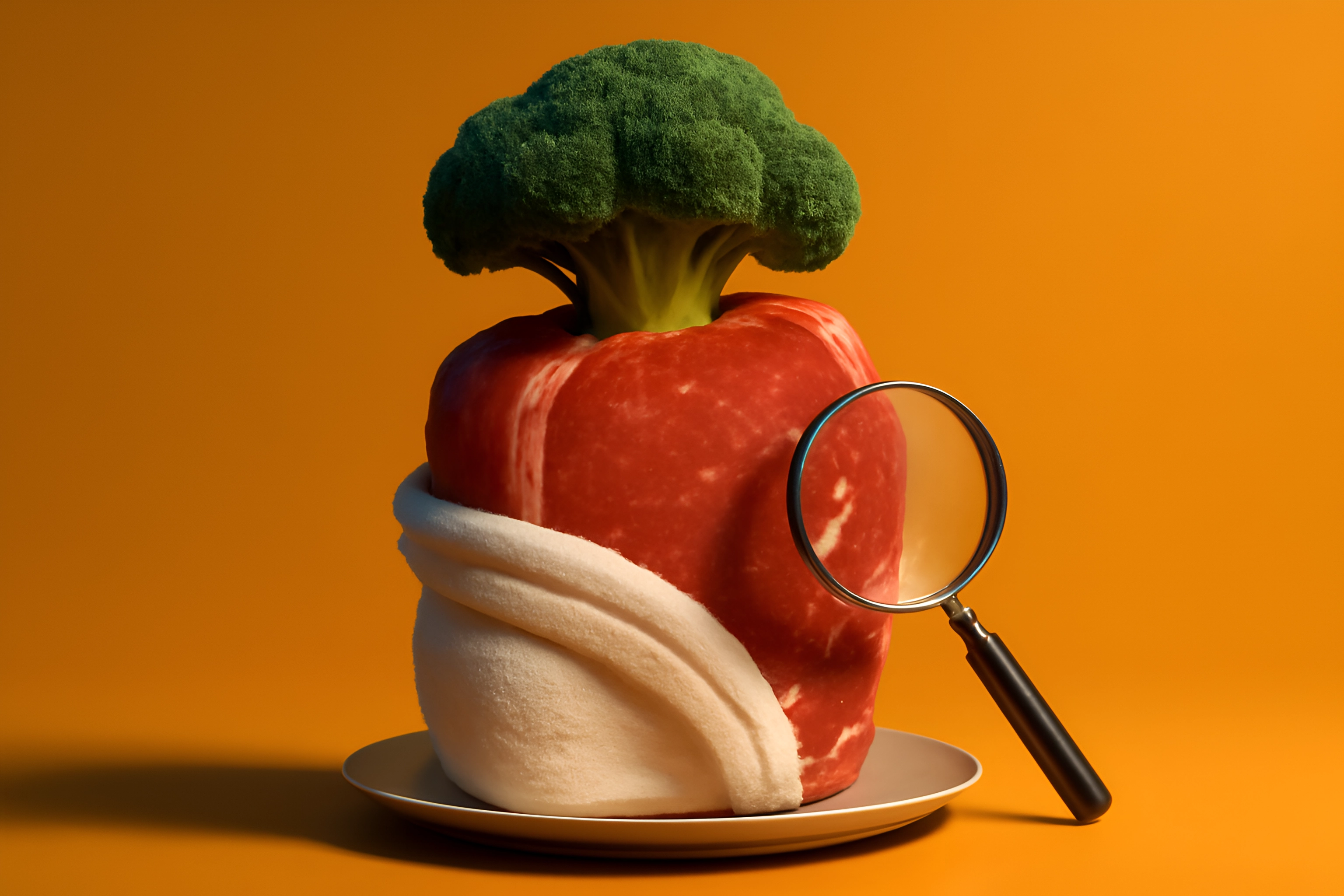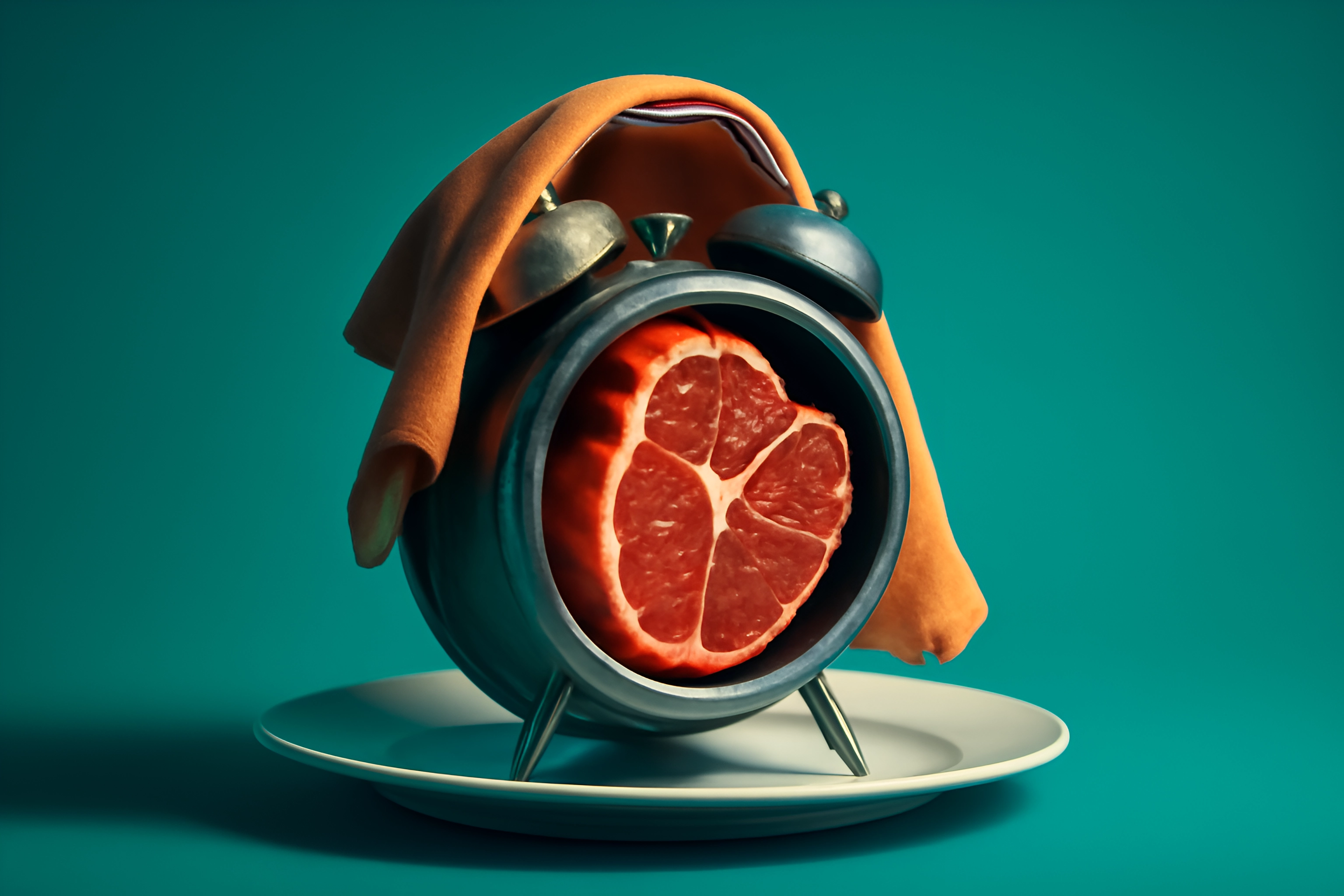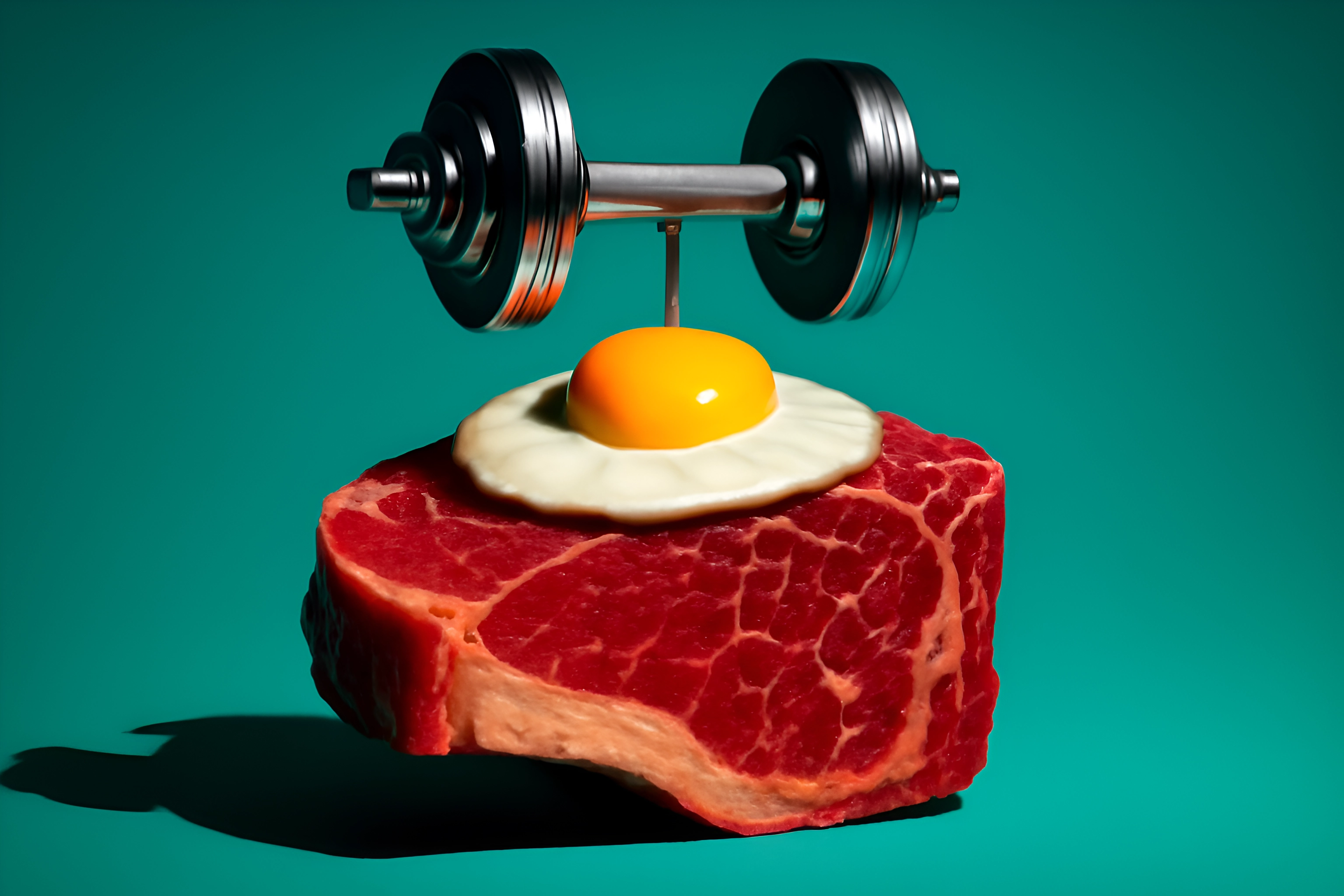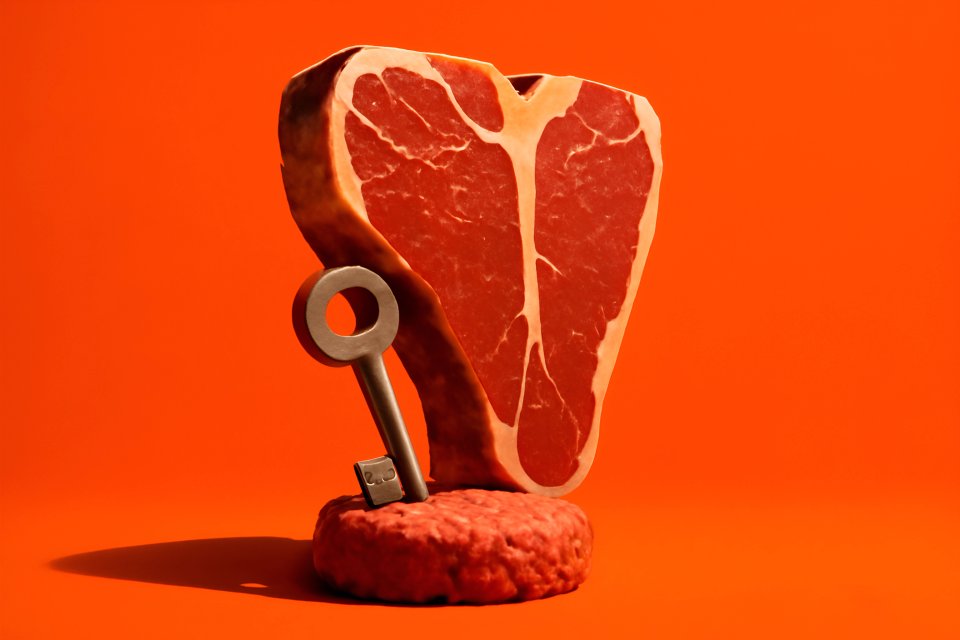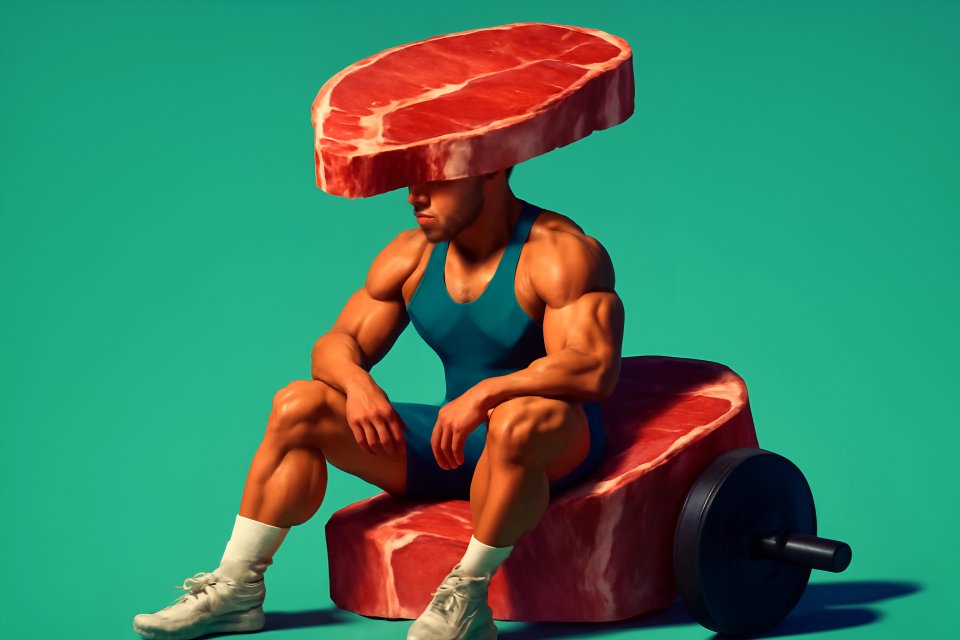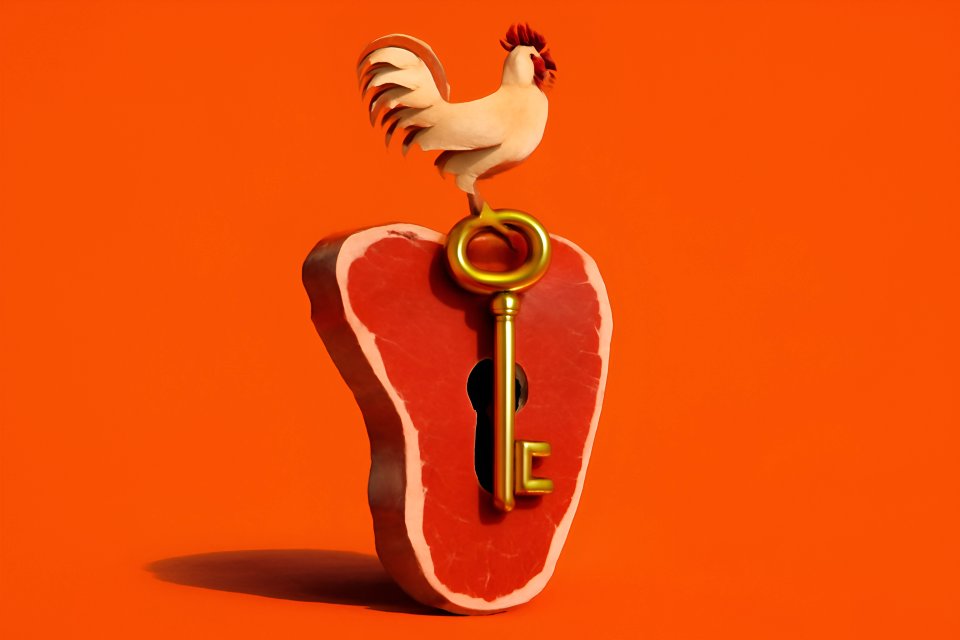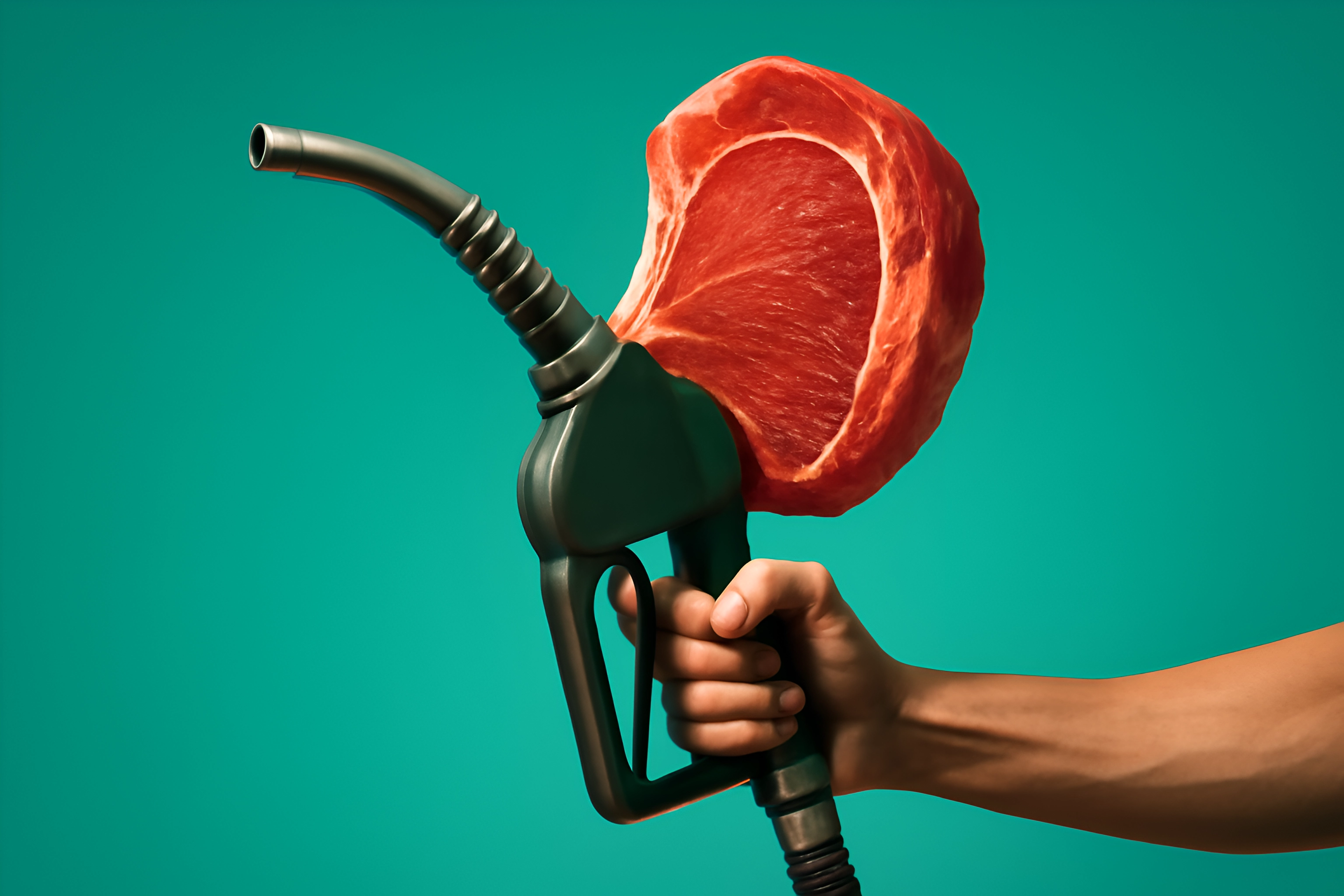
The pain is unforgettable, isn't it? You’re miles into a run, a ride, or a race, and suddenly your legs feel like lead. Your mind goes foggy, your energy evaporates, and every step becomes a monumental effort. This is the dreaded "bonk," the moment your body screams for fuel, and you’re forced to choke down another sticky, sugary gel that churns in your gut.
For too long, we’ve been told this is just the price of admission for endurance athletes. We’ve been chained to the cycle of carb-loading, constant refueling, and the inevitable energy rollercoaster of sugar highs and devastating crashes. But what if there was a better way? What if you could tap into a cleaner, more powerful, and virtually limitless source of fuel that’s already stored in your body?
This is the promise of the carnivore diet—a radical shift that turns you from a fragile sugar-burner into a metabolically efficient endurance machine. It’s about unlocking your primal engine and fueling your body the way it was designed to be fueled. In this post, we'll break down exactly how to use the carnivore diet to fuel your performance, optimize recovery, and finally say goodbye to hitting the wall. We'll cover pre-workout meals, electrolyte strategies, and post-workout recovery protocols that will change the way you train forever.
The Shift from Sugar-Burner to Fat-Adapted Athlete
Why Carb-Loading Isn't the Only Way
The conventional wisdom sold to athletes is built on a fragile foundation: sugar. As a "sugar-burner," your body relies on the limited glycogen stored in your muscles and liver, which provides maybe 90 minutes of fuel before you run empty. This forces you into a constant, desperate search for your next carb hit, leading to the performance-killing energy spikes and crashes that sabotage so many races. According to a review on Examine.com, this reliance on glycogen is a major limiting factor for endurance performance.
The alternative is to become a "fat-burner." By shifting to a carnivore diet, you teach your body to access its vast fat stores—a fuel tank so large it can power you for days, not hours. This process, known as fat adaptation, provides a steady, reliable stream of energy that eliminates the bonk and frees you from the tyranny of gels and bars. You gain metabolic flexibility, the ultimate advantage for any endurance athlete.
This isn't just theory; it's a profound metabolic upgrade. Instead of fighting your body's limits, you start working with its innate design. You unlock a level of sustained energy and mental clarity that sugar-burners can only dream of, transforming your performance from the inside out.
The Adaptation Phase: What to Expect
Let’s be brutally honest: this transformation doesn’t happen overnight. Your body has spent years, maybe decades, running on carbohydrates, and it needs time to switch its primary fuel source. This transition, often called the "adaptation phase," can take anywhere from two to six weeks, and during this time, you might feel a temporary dip in your performance.
During this period, some people experience the "keto flu," with symptoms like fatigue, headaches, and irritability. This isn't a true illness but a sign that your body is crying out for electrolytes, particularly sodium. As explained in an article from the Journal of Sports Medicine and Physical Fitness, lower insulin levels on a low-carb diet cause your kidneys to excrete more sodium, making replenishment absolutely critical. You can crush the keto flu by aggressively increasing your intake of salt, potassium, and magnesium.
Think of this phase as a short-term investment for a massive long-term payoff in your endurance performance on carnivore. Pushing through this initial adaptation is the price of entry to achieving metabolic freedom. For a detailed plan on navigating this period, our Getting Started on the Carnivore Diet: A Beginner’s Guide for Gut Healing provides the foundational steps you need.
Pre-Workout Fuel: Building Your Carnivore Nutrition Plan
Timing is Everything: To Eat or Not to Eat?
Once you’re fat-adapted, you have incredible flexibility in how you fuel your training. Do you need to eat before every session? Not necessarily. For shorter or lower-intensity workouts, many athletes thrive on fasted training, which can further enhance your body's ability to burn fat for fuel. As Runner's World points out, fasted sessions can be a powerful tool for improving metabolic efficiency.
However, for those long, grueling efforts or high-intensity interval sessions, a pre-workout meal is your secret weapon. The key is timing. Consuming a solid, fat-and-protein meal 2-4 hours before your workout gives your body ample time to digest and make that energy available right when you need it most. This strategy, supported by experts at Precision Nutrition, ensures you start your session with a full tank of slow-burning fuel, not a stomach full of undigested food.
Experimentation is your best friend here. Try a few fasted morning runs and see how you feel. For your next long run, have a fatty steak a few hours before and notice the difference in your sustained power. To master this approach, our Beginner's Guide to Carnivore Diet Fasting can help you balance energy levels and unlock powerful metabolic benefits.
What to Eat: The Perfect Pre-Endurance Meal
Forget the pasta dinners and oatmeal breakfasts. The ideal pre-endurance meal on a carnivore diet is built on two pillars: high-quality fat for sustained energy and moderate protein for muscle preservation. You want fuel that burns low and slow, not hot and fast like sugar.
Your new go-to pre-workout meals should look something like this: a fatty cut of steak like a ribeye or chuck roast, cooked in butter or tallow; a generous portion of 80/20 ground beef with a couple of eggs fried in bacon grease; or a few thick slices of pork belly. These meals provide the dense, stable calories your body needs to perform for hours without a single crash. This isn't just about calories; it's about sending your body the right signals.
The fat provides the long-lasting energy, while the protein ensures your body doesn't turn to breaking down precious muscle tissue for fuel during a long effort. This simple, powerful combination is the foundation of athlete carnivore nutrition. It’s the fuel that builds resilient, unbreakable endurance.
Intra-Workout Fueling: The Surprising Simplicity
Freedom from Gels and Bars
Here is where the magic truly happens. Imagine running a half-marathon, a full marathon, or tackling a 50-mile bike ride without ever needing to reach for a single gel, chew, or bar. For a fat-adapted carnivore athlete, this isn't a fantasy; it's the new reality. Once your body is primed to burn its own fat, you no longer need to constantly shovel in external calories for most events under three or four hours.
This freedom is about more than just convenience. It’s about saving your gut. A significant percentage of endurance athletes suffer from exercise-induced gastrointestinal distress, often caused by the high-sugar, highly processed sports nutrition products they’re told they need. By eliminating them, you eliminate the bloating, cramping, and emergency bathroom stops that ruin races.
You can finally focus on your performance, not on managing your digestive system. You’re running on clean, internal energy, allowing you to maintain a steady pace and a clear mind from start to finish. This is one of the most profound benefits of using the carnivore diet for endurance athletes.
The Real MVP: Electrolytes
While you can ditch the calories, there is one thing you absolutely cannot ignore during your workout: electrolytes. This is, without a doubt, the most critical component of intra-workout fueling on a carnivore diet. As we've discussed, your body flushes out more sodium and potassium on a low-carb diet, and these losses are magnified by sweating during exercise.
Ignoring electrolytes is a recipe for disaster, leading to cramping, fatigue, dizziness, and a dramatic drop in performance. Your primary focus during any endurance activity should be on replacing sodium, potassium, and magnesium. According to research published in the Journal of Exercise and Nutrition, even elite athletes on low-carb diets require careful electrolyte management to maintain performance.
The strategy is simple but non-negotiable. Add a high-quality, unrefined salt like Redmond Real Salt to your water bottle. For longer or hotter sessions, consider a zero-carb electrolyte powder. Some ultra-endurance athletes even carry small salt packets or have bone broth waiting in a thermos at aid stations. To master this crucial element, explore our complete guide on Maximizing Electrolyte Balance on a Carnivore Diet.
Post-Workout: The Ultimate Carnivore Diet Recovery Protocol
Rebuild and Repair with Nutrient-Dense Animal Foods
If you think the performance benefits are impressive, wait until you experience carnivore diet recovery. This is where the lifestyle truly separates itself from the pack. While other athletes are hobbling around for days, battling soreness and inflammation, you can bounce back faster, stronger, and ready for your next training session.
The key is to refuel with the most nutrient-dense, bioavailable foods on the planet: animal products. Your goal is to consume a large, satisfying meal rich in protein and fat within one to two hours of finishing your workout. This timing, recommended by organizations like Sports Dietitians Australia, helps kickstart the muscle repair process and replenish your energy stores efficiently.
This isn't about "recovery shakes" filled with cheap whey protein and artificial sweeteners. This is about real food that provides the building blocks your body is screaming for. You’re not just replacing calories; you’re flooding your system with the exact nutrients needed to rebuild tissue, lower inflammation, and accelerate healing. For a deeper dive, check out our post on Carnivore Diet for Athletic Recovery.
Key Nutrients for Faster Recovery
Your post-workout meal is a strategic tool for healing. The high-quality protein from meat provides a complete profile of essential amino acids, which, as Harvard Health Publishing explains, are critical for repairing the microscopic tears in your muscles caused by intense exercise. This leads to less soreness and faster adaptation.
But it goes beyond just protein. Animal foods are rich in collagen and glycine, especially when you consume connective tissue, skin-on cuts, or bone broth. These compounds are essential for rebuilding healthy joints, tendons, and ligaments—the very tissues that take a beating during endurance training. This is a crucial factor in long-term durability and alleviating the joint pain that plagues so many athletes.
Furthermore, by removing inflammatory agents like seed oils, sugar, and plant-based irritants, you drastically lower your body's overall inflammation levels. The Mayo Clinic notes a strong link between diet and inflammation, and by eating carnivore, you are creating an internal environment that promotes rapid healing instead of chronic soreness.
Ideal Recovery Meals
What does the ultimate recovery meal look like? Think nutrient density and satisfaction. A thick, bone-in ribeye steak not only delivers pristine protein and fat but also provides minerals from the bone. A large bowl of slow-cooked shredded beef or lamb shoulder, served with a cup of warm, salty homemade bone broth, is another perfect choice.
For an extra boost, incorporate fatty fish like salmon a few times a week for its powerful anti-inflammatory omega-3 fatty acids. And don't forget the most nutrient-dense food on earth: beef liver. Just a few ounces provides a massive dose of B vitamins, vitamin A, and heme iron to supercharge your recovery and energy levels.
Here is a sample comparison of recovery fuel sources:
| Nutrient Source | Key Recovery Benefits |
|---|---|
| Bone-In Ribeye | High-quality protein, fat, minerals from bone |
| Bone Broth | Collagen, glycine, electrolytes, hydration |
| Salmon | Omega-3 fatty acids, protein, anti-inflammatory |
| Beef Liver | B vitamins, Vitamin A, heme iron, nutrient density |
This is how you rebuild a stronger, more resilient body.
A Healing Story: John's Marathon Transformation
From Hitting the Wall to a Personal Best
John was a classic endurance athlete. For years, he’d followed the conventional rules for his marathon training, choking down pasta the night before a race and meticulously planning his intake of sugary gels. Yet, like clockwork, he’d hit the wall around mile 20, his race devolving into a painful shuffle as his gut churned and his energy vanished.
Frustrated and constantly battling nagging injuries and long, painful recovery periods, he felt like he was fighting his own body. After stumbling upon the HealingCarnivore community and reading the real healing stories, he decided to make a radical change. He committed fully to the carnivore diet for endurance athletes, trading his gels and grains for ribeyes and ground beef.
The first few weeks were tough, but he trusted the process. Six months later, he stood at the starting line of his next marathon, feeling calmer and stronger than ever. He ran the entire race on nothing but water and salt. Not only did he never hit the wall, but he felt a steady, powerful surge of energy through the final miles, finishing with a 15-minute personal best and, most importantly, a smile on his face. The best part? He woke up the next day with minimal soreness, ready to train again.
Conclusion: Your New Blueprint for Endurance
The path to becoming an unbreakable endurance athlete is simpler and more powerful than you’ve been led to believe. It’s not about more sugar, more gels, or more complicated fueling plans. It’s about returning to the primal blueprint your body was designed to follow.
Let’s recap the strategy:
- Shift from a fragile sugar-burner to a resilient, fat-adapted athlete for stable, limitless energy.
- Fuel your long workouts with a high-fat, moderate-protein meal a few hours beforehand.
- During your activity, forget the calories and focus relentlessly on electrolytes.
- Leverage the world’s most nutrient-dense foods—meat, organs, and fat—for rapid, low-inflammation recovery.
The carnivore diet isn't a limitation; it's your ultimate strategic advantage. It simplifies nutrition, eliminates gut distress, enhances performance, and promotes a level of healing and recovery that allows you to train harder and smarter.
Stop fighting your body with sugar and start fueling it with the primal power it was designed for. Your next personal best is waiting.
Call to Action
Are you an endurance athlete on the carnivore diet? Share your go-to pre-workout meal or recovery tip in the comments below!
New to this way of eating? Check out our Ultimate Beginner's Guide to the Carnivore Diet to get started on your healing journey.




